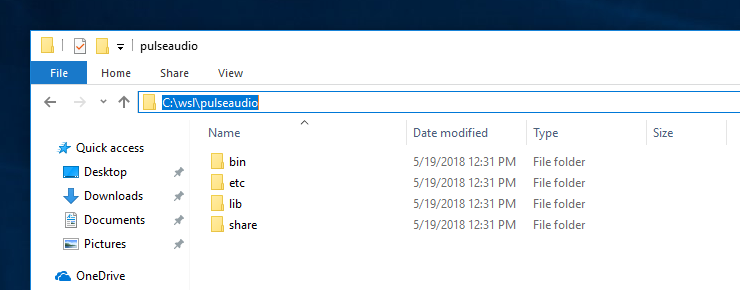
- #UBUNTU AUDIO LOOPBACK INSTALL#
- #UBUNTU AUDIO LOOPBACK MANUAL#
- #UBUNTU AUDIO LOOPBACK PATCH#
- #UBUNTU AUDIO LOOPBACK SERIES#
The tests SHOULD ask the user if any audio hardware exists in the system that was not automatically detected. These tests MUST present the user with a list of detected audio hardware and ask the user to confirm their existence. This will remain the default audio test presented to users in a standard Checkbox test.Īn additional suite of Checkbox tests will be written to test audio and added to the checkbox-extras package. The current Checkbox test that simply produces a sound and asks if the user heard it will remain in place. In the future, more advanced analysis of received audio may be performed to test for the correctness of the generated/received audio. The size threshold of the file indicating silence or recorded audio will be determined during implementation.įor the purposes of this specification, it will be sufficient to determine if audio or silence is detected by the Checkbox test.

#UBUNTU AUDIO LOOPBACK MANUAL#
OEM hardware.) Ideally Checkbox should be able to be made aware of expected hardware detection, but this currently can be covered via Extended Manual Testing as described below. This SHOULD generate a FAIL value on hardware known to have audio hardware installed. This MAY generate a SKIP value in normal system audio testing, as there is currently no way to indicate expected hardware existence on a per-machine basis. No audio hardware is detected in the list of hardware:.Silence is detected, as indicated by a recorded audio file of sufficiently small size: FAILĪudio is detected, as indicated by a recorded audio file of sufficiently large size: PASS This MUST generate a pass/fail value as follows: if the user does not own USB audio hardware, they should skip any USB audio tests.)Ī Checkbox test or suite will be written to generate a sound on the audio output and listen for it on the input. This is indicated below by the "Skip if Successful" column a test can be skipped if the test in this column has previously passed successfully.Īll test descriptions and instructions should be written in clear user-focused language and should make it clear that the user may skip any test for which they lack the hardware or interest. Users will also be asked what hardware they have available and will be prompted to test only the hardware that they indicate they have. Testing will start at the top of the audio stack - if the most complex audio test cases pass, then it can be assumed that lower-level parts of the audio stack are functioning properly. The test dependencies will be designed as to reduce redundant tests.
#UBUNTU AUDIO LOOPBACK SERIES#
Automated Checkbox tests will be created relying on this configuration to test audio.Ī series of manual Checkbox tests will be created to test audio and added to checkbox-extras. This will allow automated tests to produce a sound on the audio output and listen for it on the input.
#UBUNTU AUDIO LOOPBACK PATCH#
This will consist of simply connecting the default audio output to the default audio input with a patch cable. Tested systems will have hardware configuration changes made to enable automated testing.



He is pleased that his efforts will help indicate which hardware needs further development efforts in Ubuntu. He runs Checkbox and performs some simple audio tests.
#UBUNTU AUDIO LOOPBACK INSTALL#
Users should be able to expect sound to work properly from install onward. Certain tests are conduced automatically by the System Testing application, but extended tests are available for users who want to help ensure that a wide variety of audio hardware works correctly with Ubuntu.įunctioning audio is crucial to the Ubuntu desktop experience. Launchpad Entry: karmic-qa-extended-audio-testingĮxtend both manual and automated audio test cases to test a range of use cases and hardware configurations on a regular basis.Įxtended audio testing is available.


 0 kommentar(er)
0 kommentar(er)
